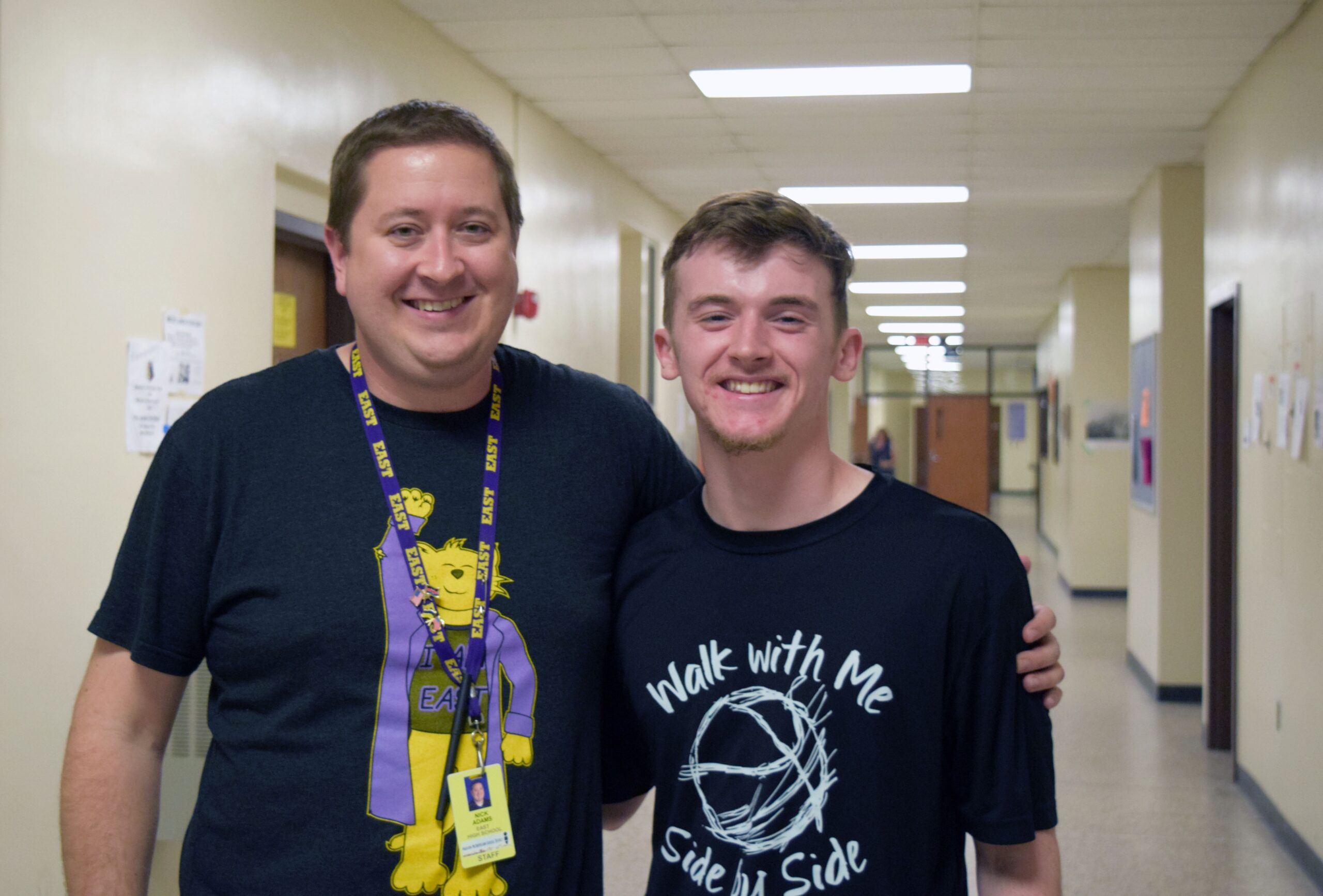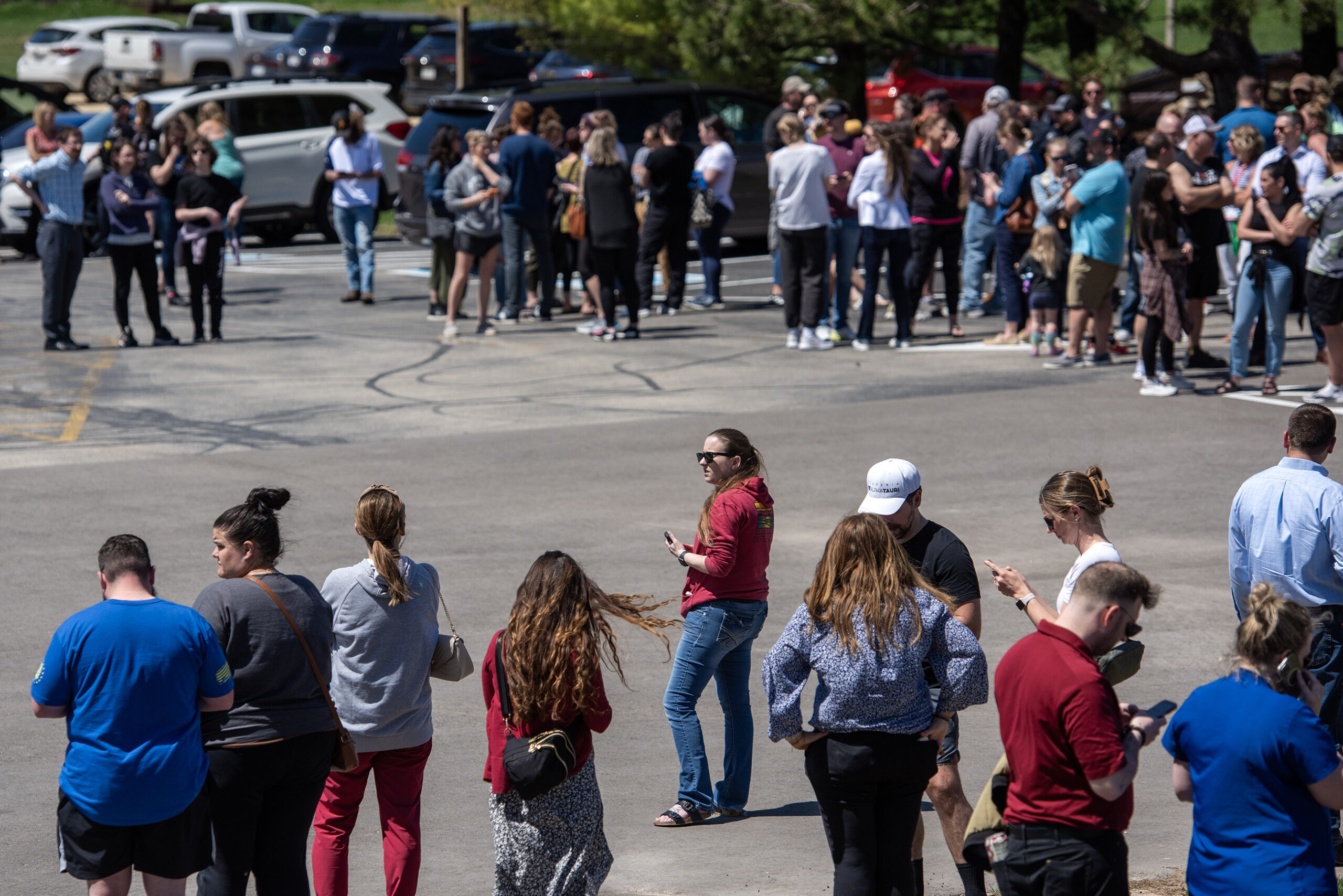Carson Tomony won’t be turning 18 until December, that means he can’t vote in the November elections.
But if he could, he says he would “definitely exercise my privilege to vote.”
Carson, 17, is a junior at Madison East High School, and as a student in Nick Adam’s United States government class, he’s learned about candidates and where they stand on the issues.
Stay informed on the latest news
Sign up for WPR’s email newsletter.
Carson and his classmates have also noticed something through the class’ weekly requirement to keep tabs on current events: school shootings appear to be commonplace.
“Every week it’s an option to say, ‘Hey, there is another school shooting.’ So for me that’s week after week, where I’m like, ‘OK, we got to do something about this.’”
The number of school shootings really bothers Carson, who said the most important issue to him this election cycle is gun control.
“To me it comes down to, is it more important to keep the people safe or to allow people to continue to have guns?” Carson said. “… At this point to me it’s not about politicians sending thoughts and prayers to families, but rather making actual changes to stricten up gun control laws and take action before more people die.”
Columbine happened before Carson was born. On April 20, 1999, two Columbine High School students in Littleton, Colorado, opened fire at the school and killed 13 people.
That’s a shooting Adams remembers. He and his high school classmates talked about it in their final two months of senior year, but it “went out of my memory for a while,” Adams said.
Then Sandy Hook happened. On Dec. 14, 2012, a 20-year-old man in Newtown, Connecticut, killed 20 first-graders and six school employees at Sandy Hook Elementary School.
“At this point to me it’s not about politicians sending thoughts and prayers to families, but rather making actual changes to stricten up gun control laws and take action before more people die,” Carson Tomony said.
Sandy Hook was a “big time turning point” for Adams and how he thought about gun control. He was in his third year of teaching at Madison East High School and had a 1-and-a-half-year-old daughter. She’s now in first grade.
“It made it much more personal I think,” Adams said. “Because to know that somebody could walk into a first grade school, a first grade classroom, and shoot them. I mean my daughter is cute and awesome, and it’s like how could somebody do that? Almost six years later it’s still on my mind quite often.”
Carson remembers Sandy Hook, and he says that shooting and the recent mass shooting at Marjory Stoneman Douglas in Parkland, Florida, where 17 people were killed in February, have brought gun control to the forefront for him.
He participated in the walkouts in March where thousands of people marched on the Wisconsin state Capitol to call for stricter gun control laws following Parkland.
Carson said school shootings are what is motivating youth to get to the ballot box and call for change.
And both Adams and Carson say if you want to make change, you have to get out and vote or get out and motivate people to vote.
“I have the philosophy that if you don’t vote, you can’t complain,” Adams said. “So that I feel like if I vote and I don’t like what’s going on, I can complain, and then I can go out and vote again to make change if I want to.”

Andrea Anderson/WPR
Adams, who grew up in Port Washington, hasn’t missed an election since his first in 2000 when he voted for Republican George W. Bush for president and Democrat Herb Kohl in his re-election bid to the U.S. Senate.
Over the years, the issues that mattered the most to Adams began to change and his political affiliations transformed. In 2004, Adams’ votes aligned more with Democratic candidates.
The issue that’s most important to him on the state level this election cycle is funding for K-12 education and higher education. On the national level it’s climate change.
Adams says one of the most important things he hopes his students take away from his classes is a well-rounded education on candidates from all parties, and where they stand on the issues and why so students aren’t “just voting a certain way because somebody told them to do so.”
Students knowing how to vote is another important goal of Adams this year. He wants students to know how to register, what identification is needed and where their polling place is.
“I have the philosophy that if you don’t vote, you can’t complain,” Nick Adams said.
Carson says he’s learned this and more through his U.S. government class and education at Madison East High School.
He hopes to one day enter a field that can help him be a catalyst for change.
He’d like to see the achievement gap between white students and students of color shrink, because he believes if the achievement gap narrows, there will be more diversity among elected officials at all levels of government. One way to close the achievement gap, he says, is making it so more students of color can participate in AP classes.
“You look around East and you see white people and black people and Asian people and Latino people. But then you look at AP classes and you’re not seeing all of those faces,” Carson said. “So I think you got to ask yourself, ‘Why is this?’ And I think there’s definitely a connection between that and when you look at positions of power (and) why it’s just so white.”
Wisconsin Public Radio, © Copyright 2025, Board of Regents of the University of Wisconsin System and Wisconsin Educational Communications Board.







